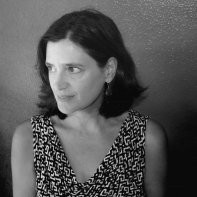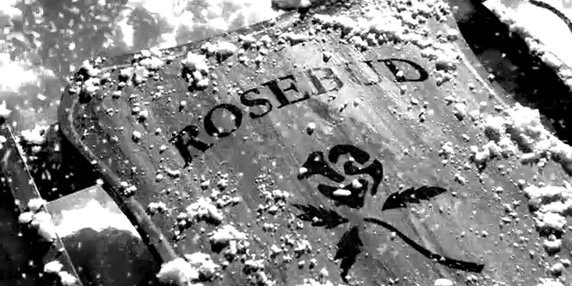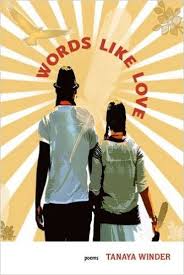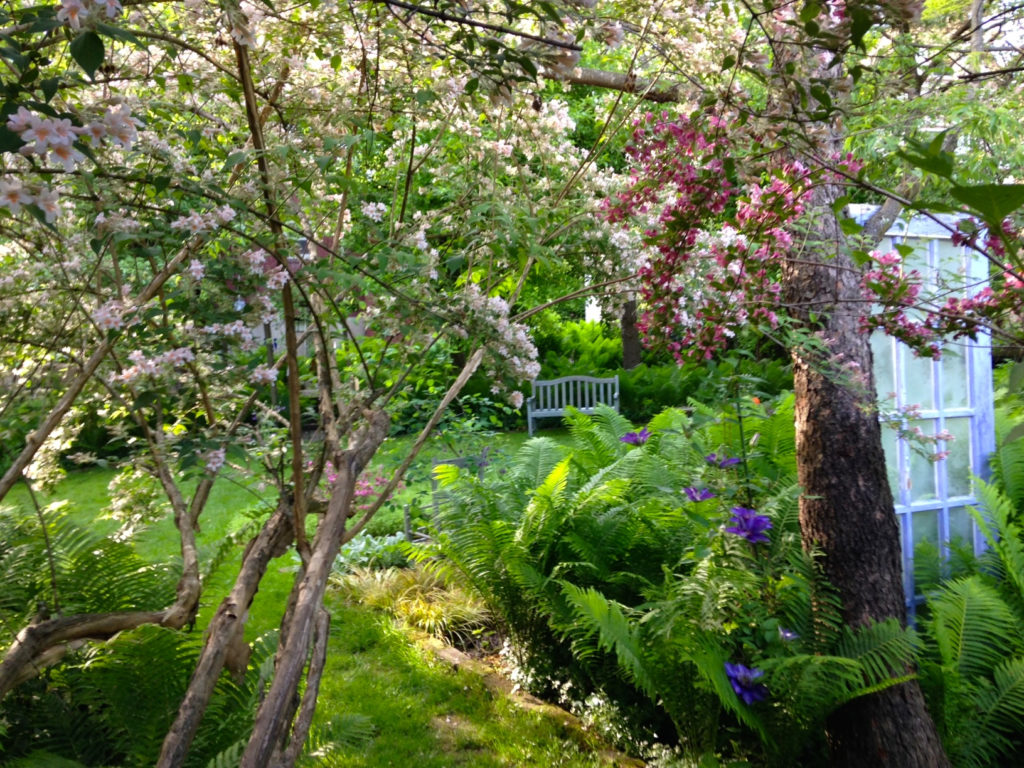Hiding in Plain Sight: How Ambient Noise and Clutter Feed a Story
 “Clink. Clink.”
“Clink. Clink.”
We’ve spent an hour and a half with them at this point, with repeated eruptions—Martha savaging her husband, George setting off timed explosions from his store of resentments. Then suddenly: the voices go silent, no sign of George and Martha, of Nick and Honey, the bested guests. Moonlight through tree branches, a yard we see from above, as if from a bedroom window. In the background, stringed instruments, serene. Then Martha’s voice calling for the others and, before Elizabeth Taylor appears onscreen, the sound of ice cubes in her drink, something we’ve been hearing since the opening scene: director Mike Nichols’ brilliant use of ambient noise.
The dialogue dazzles, of course, thanks to Edward Albee, in this case so perfectly delivered that sometimes as I watch “Who’s Afraid of Virginia Woolf?”—at least a dozen times I’ve indulged the pleasure of this viewing—I take the words, the execution, for granted and marvel at what the director is doing to riff on what the words are getting at. In the scene referenced above, I am not surprised to hear ice cubes clinking before the camera reaches Martha, meandering drunkenly across the yard to her car. The camera has not followed the station wagon here from the foursome’s drunken dancing excursion, but it feels as if we’ve seen the inebriate braking—front tires up over the curb at an angle so that the vehicle lists slightly, passenger-side turn signal winking, winking, winking, rear passenger door flopped open. Nichols doesn’t waste the turn signal. Martha staggers around the car, opens the driver’s door, reaches in, and the turn signals wink back and forth between each other before they blink out. Martha wanders the yard, then, calling out intermittently, her drink glass clinking the while. Finally, the screenplay gives a nod to what the director is doing: Martha says, “Clink. Clink.”
*
I recommend “Who’s Afraid of Virginia Woolf” to fiction writers. Consider it a tutorial in the uses of your characters’ environment, the details of their surroundings—indoor clutter, appliances, items of food and drink, features of the outdoor landscape, sounds so common (clinking ice cubes, anyone?) a writer might overlook them, and so forth. Always in this film there are things for George and Martha and Nick and Honey to do while they speak the language of wreckage.
In what is for me the funniest moment, Elizabeth Taylor leans into a cluttered refrigerator, opened by Richard Burton, grabs a drumstick from a platter of chicken sitting inside uncovered, grabs a salt shaker from the messy table Burton is clearing, salts and devours her piece of chicken, her mouth open as she chews, talking around mouthfuls. Then the perfect capstone: Taylor returns to the refrigerator, still open, tosses the chicken bone onto the same platter, and shuts the door, all without pausing in her run-on monologue about a movie Martha can’t remember the title of. We see a woman, her husband, their relationship, their way of life here. If you didn’t know a word of English, the details would tell you all you need to know.
*
A decade ago, I took a weekend fiction workshop with Daniel Mueller, author of the stunning short story collection How Animals Mate. Our focus was landscape, Mueller’s mantra:
Let the landscape of your story tell your story.
If a story stalls, look around. Something in your story’s landscape, its environment, will get it moving again.
As an exercise, Mueller asked participants to picture an odd item, oddly out of place in its setting. We went around the workshop table then, each participant volunteering such an item, all of us recording the items on our own list. Our assignment was to select an out-of-place item from the list and write a scene for it.
I chose a wristwatch buckled to the branch of a tree. I already had fragments for a story about a boy named Berndt whose father has committed suicide. For Daniel’s assignment, I imagined that Berndt’s father had taken off his watch on the morning of his suicide and buckled it to a mesquite tree branch before slashing his wrists. The scene I wrote was set several weeks later. Berndt is on his way to feed pigs on the family farm, when morning sun flashes off the crystal of his deceased father’s missing watch. Berndt unfastens the watch and beats it against the mesquite trunk until the crystal smashes, crying and cursing his father. This scene became the closing scene in a story about a mysterious watch and the riddle of a father who owned it. My challenge was to make the watch real and then to build a story around it, leading to the father’s suicide and his son’s subsequent discovery of the watch buckled to a tree.
What might have been peripheral, unimportant, became the story’s vehicle. The story of a watch becomes the story of a difficult father. A son puzzling over the watch itself provides a way of expressing an inner life that is not accessible to or expressible by the son himself. I loved writing this story, loved unfurling the watch’s story, letting the watch carry the bigger story of son and father. Unanswered questions about the watch stand in for unanswered questions about the father. The discovery of the watch, in the closing scene, provides a believable stimulus, without sentimentality, for the protagonist’s anger, his grief. When I was done, the watch even provided a title, “Center Wheel, Balance Wheel, Escape Wheel” (available at Prime Number).
*
This approach carries one of my first published stories, “In the Garden,” online right here at Superstition Review. A husband and wife converse over breakfast in their backyard. By increments, without intending to, they say things that can’t be taken back, irreparably damaging their marriage. Talking heads cannot carry a short story, at least not one I am capable of writing, so early on, a mockingbird sings out from a live oak near the breakfast table. Then the household tomcat slinks in from the creek. Turns out his name is Tyger, which opens a window onto the protagonist and his wife. The yard has room for a tomato garden, the wife’s—and a pesky squirrel hanging out among the cages. A newspaper at center table has a photo of Ronald Reagan above the fold, spurring an exchange that gives away the year—1982—when the husband says, “Look on the bright side. Two more years and we’ll vote him out.” The husband has a bit of a thing for his best friend; the wife suspects as much. This is a breakfast just for two, though—no reason for the best friend to drop by. Except then a repairman arrives to address hail damage on the roof. Wife notices that husband has noticed the repairman. Both turn at the sound of the repairman’s hammer. Then this: “A patch of sweat, like the map of a harbor Blake wanted to explore, darkened the blue of the man’s shirt in the space between his shoulder blades.” And so it goes. The conflict reaches a peak vicariously, when the mockingbird dive-bombs the squirrel and the cat leaps at the bird’s sudden accessibility.
*
Ambient noise is my personal catchall for the material stuff, auditory and non-, that surrounds us, often without our notice, the material stuff upon which we can launch credible and engaging stories. This “noise” includes any and all sensory details, any and all physical aspects of the landscape, any and all items at hand in your characters’ environs. A caveat, though. Ambient noise is not a fiction writer’s sole tool. A story can overwhelm itself and its readers with this kind of detail. Nothing impedes narrative momentum like a margin-to-margin thicket of details. Nothing is more tedious.
*
Watch “Who’s Afraid of Virginia Woolf?” Let yourself revel in the many ways by which the characters interact with facets of their environment—ice cubes, drink glasses, liquor bottles, cigarettes, a platter of fried chicken, a child’s swing hanging in the tree outside, door chimes, a chain lock on the front door. . . .
Read good stories. Here I’ll mention only two—and very short. In “Say Yes” by Tobias Wolff, a husband and wife wash dishes and prepare for bed. That’s it. But the meandering path of talk over dishes leads this couple into a hypothetical question about mixed-race dating, with an answer that changes everything. A younger couple, five years married, figures at the center of “The Girls in Their Summer Dresses” by Irwin Shaw. As they walk New York City on a lovely day, the wife catches the husband more than once distracted by the girls of the title passing by on the street. Questions lead to defensive answers, and as in “Say Yes,” things are said that cannot be taken back, that change everything between man and wife.
Immerse yourself in the quiet noise of Wolff’s story, in the vibrant noises of Irwin’s city walk. Then settle into the noises that will tell your next story.
Editor’s Note: David served as co-editor of Wingbeats and Wingbeats II, collections of poetry writing exercises from Dos Gatos Press.
 Today we are pleased to feature poet Mary Morris as our Authors Talk series contributor. Mary discusses her writing process involving the current manuscript she is working on, which relates to her ninety-five year-old mother, and reads her poem, “Deduction.”
Today we are pleased to feature poet Mary Morris as our Authors Talk series contributor. Mary discusses her writing process involving the current manuscript she is working on, which relates to her ninety-five year-old mother, and reads her poem, “Deduction.”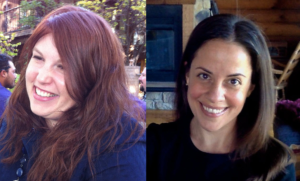 Join Leah Newsom, second year, ASU MFA in Creative Writing, as she leads a panel and Q&A with ASU MFA Alumni, Bonnie Nadzam and Katie Cortese. The discussion will be centered on the complexities of writing young women. The writers will also be discussing their writing process after finishing their degree: how does the process change after the MFA? The Q&A will be opened to the audience, so please bring questions prepared. The Q&A will be held at the Piper Writers House (
Join Leah Newsom, second year, ASU MFA in Creative Writing, as she leads a panel and Q&A with ASU MFA Alumni, Bonnie Nadzam and Katie Cortese. The discussion will be centered on the complexities of writing young women. The writers will also be discussing their writing process after finishing their degree: how does the process change after the MFA? The Q&A will be opened to the audience, so please bring questions prepared. The Q&A will be held at the Piper Writers House (